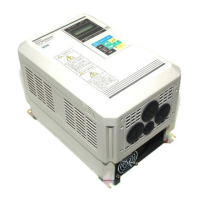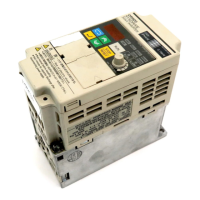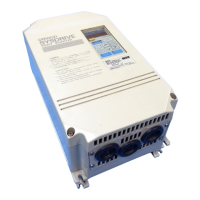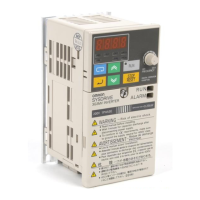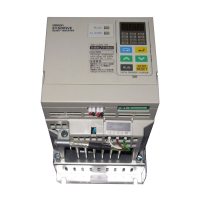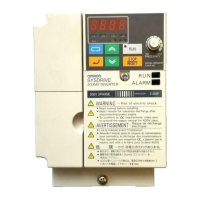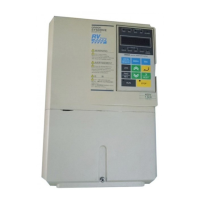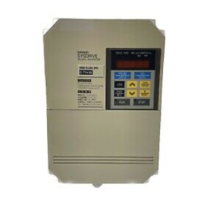6-25
• This
parameter is used to eliminate noise in the torque reference signal and adjust the responsiveness
to the host controller. This parameter cannot be changed during operation.
Parameter Display name Setting Units Default
Valid access levels
number
range setting
V/f
Control
V/f with
PG
Open Loop
Vector
Flux
Vector
d5-02 Torq Ref Filter 0 to 1000 ms 0 Not applicable. Advanced
Note 1. Set the torque reference filter’s primary delay time constant in ms units.
Note 2. Increase the time constant setting if vibration occurs during torque control operation.
D Setting the Torque Compensation Bias
• Set multi-function analog input (terminal 16) or frequency reference current input (terminal 14) to
torque compensation (setting 14).
• When
the amount of torque loss at the load is input to one of these terminals, it is added
to the torque
reference to compensate for the loss.
Parameter Display name Setting Units Default
Valid access levels
number
range setting
V/f
Control
V/f with
PG
Open Loop
Vector
Flux
Vector
H3-05 Terminal 16 Sel 0 to 1F --- 1F Basic or Advanced
H3-09 Terminal 14 Sel 1 to 1F --- 1F Advanced
Note 1. Set
torque compensation (setting 14) in the input terminal that wasn’t set to torque reference
(setting 13).
Note 2. These parameters cannot be changed during operation.
• Set the signal level for the terminal. These parameters cannot be changed during operation.
Parameter Display name Setting Units Default
Valid access levels
number
range setting
V/f
Control
V/f with
PG
Open Loop
Vector
Flux
Vector
H3-04 Term 16 Signal 0 or 1 --- 0 Basic or Advanced
H3-08 Term 14 Signal 0 to 2 --- 2 Advanced
Signal Level Settings
Setting Function
0 0 to +10 V input (When H3-08 is being set, be sure to disconnect jumper wire J1.)
1 0 to ±10 V input (When H3-08 is being set, be sure to disconnect jumper wire J1.)
2 4 to 20 mA input (H3-08 only)
Note 1. Set the proper signal level for the torque compensation bias that you want to input.
Note 2. The
direction of the torque compensation bias is determined by the sign (polarity) of the
signal
that is input. It is not determined by the direction of the run command (forward/reverse).
+Voltage (or current): Forward torque compensation
(generally counter-clockwise; axis side)
–Voltage: Reverse
torque compensation (generally clockwise; axis side)
Since
the polarity of the voltage input determines the direction, only forward torque compen
-
sation
can be input when the “0 to +10 V” or “4 to 20 mA” signal level has been selected. If you
want to input reverse torque compensation, be sure to select the “0 to ±10 V” signal level.
Advanced Operation Chapter
6
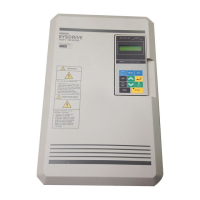
